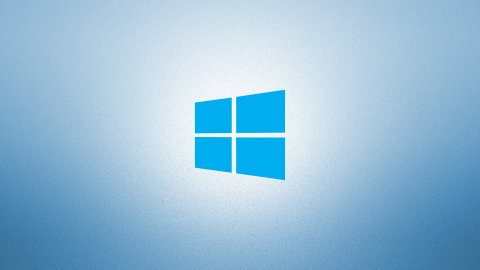
Windows 10
Windows 10 continues in its evolution path also as regards the design of the interface, with a series of new icons that will arrive in the operating system in the coming weeks, modifying another graphic aspect of the Microsoft software.The new icons are a rather marginal aspect of the system, but they are part of a general redesign of the Windows 10 interface that has already gone through the modification of the Start menu and the new aspect of the news section on the dashboard.
As can be seen from the image below, which presents a good part of them put together, the new icons "Segoe Fluent Icons" are simpler and more linear, coordinated with the aspect that Microsoft intends to make Windows 10 assume for some time now.
This graphic renewal will also involve other aspects of Windows 10, within a program known in code name "Sun Valley", which summarizes all the innovations planned in terms of the graphic aspect and the user experience of the operating system in the next period.
The Start Menu, the File Explorer and various apps integrated into the operating system will also be further modified, so to make all the graphics of Windows 10 well homogeneous with the new general vision gradually adopted by Microsoft. After the 35th anniversary of Windows, therefore, the evolution of the OS continues steadily. It should be noted, however, that despite not being supported for a year, Windows 7 is still installed on 100 million PCs.
Windows 10, some of the new "Segoe Fluent Icons" coming soon Source
Microsoft’s Windows 10 UI overhaul continues with new system icons
 © Illustration by William Joel / The Verge
© Illustration by William Joel / The VergeMicrosoft is starting to modernize some of the basic parts of Windows 10 by improving the system icons that are available in the operating system. A new preview build of Windows 10 is rolling out to testers this week, and it includes system icons that now adhere to Microsoft’s Fluent Design style.
The new icons include a more rounded and simplified look, and are available as a new font — Segoe Fluent Icons. Microsoft has also updated its new taskbar widget with the new icons, providing a good look at how basic icon changes can modernize even the smallest parts of Windows.
It’s a small change to Windows 10 that will appear later this year for most, but it’s part of a broader push by Microsoft to overhaul Windows 10. Microsoft updated some of its Windows 10 icons last year with colorful versions, and even tweaked the Start menu to make it a little more streamlined.
Microsoft is also planning a “sweeping visual rejuvenation of Windows,” codenamed Sun Valley. It might seem like Microsoft has been promising visual overhauls of Windows 10 for years with its Fluent Design push, but even bigger UI changes look set to appear later this year.
The Windows Start menu, File Explorer, and built-in apps are all expected to be overhauled as part of this UI refresh. Even basic things like buttons, controls, and sliders in apps should get some design love. This should mean Windows will look a lot more consistent, and hopefully a lot of the ancient icons and Windows 95-era prompts start to disappear.
Microsoft has put a lot of work into improving its UI consistency in Windows 10X, an upcoming version of Windows that will be designed for Chromebook-like devices. Windows 10X includes a new Start menu, and lots of changes to basic controls like Wi-Fi, the notification center, and more. It feels like a stripped back, more simplified version of Windows.
How Microsoft markets Windows 10X could be a hint at where it sees Windows heading in the future. Rumors suggest the company is gearing up to use “the new Windows” as a marketing term, and we’re expecting Microsoft to have a lot more Windows news soon. Microsoft is planning events in the coming weeks to detail its future plans for gaming, Windows, and more.
While Microsoft held its Ignite conference this week, the company had very little to say about Windows. Microsoft’s head of Windows and devices, Panos Panay, acknowledged that news is on the way, though. “I haven’t talked about the next generation of Windows, and what’s coming next,” said Panay during an Ignite session earlier this week. “I’m so pumped. The future of Windows is incredible, but we’re here today to talk about Windows 10.”
It’s unusual to hear Microsoft talk about its “next generation of Windows,” particularly as the company has stuck to the Windows 10 branding since its debut nearly six years ago. I don’t think that means we’re about to see a Windows 11, but how Microsoft separates out Windows 10 and Windows 10X will be key to avoiding any confusion (hello, Windows RT). That’s especially true if Windows 10X doesn’t support legacy desktop apps at launch, as our recent look at the OS suggests.